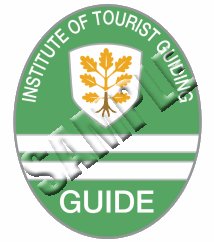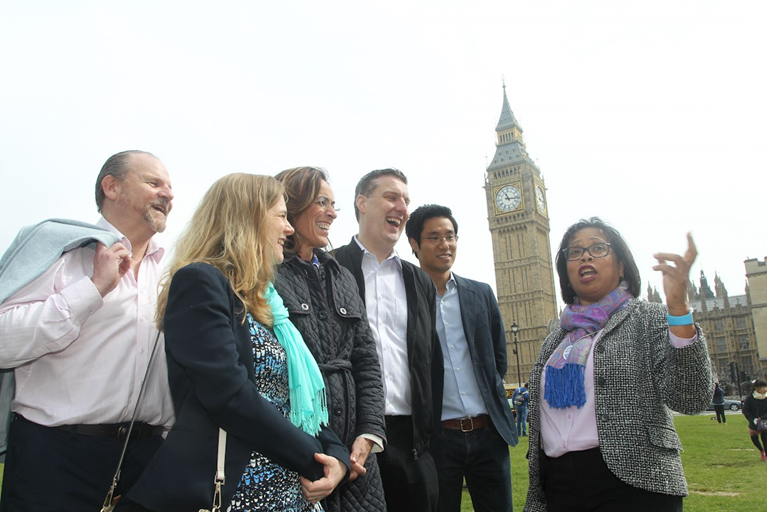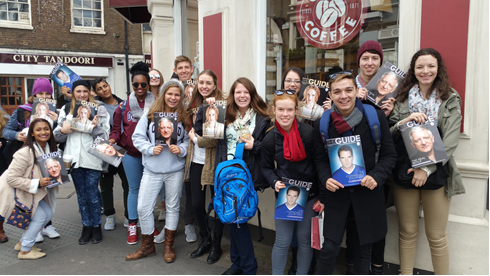

The British Guild of Tourist Guides was established in 1950. Our office is located at Unit 5, Baden Place, Crosby Row, London SE1 1YW
As the largest and longest established national membership organisation for Blue and Green Badge tourist guides in the United Kingdom our aim is to ensure our members are the ‘go to’ guides for visitors in our country, offering professional, enjoyable tours by car, on foot, public transport or coach to individuals and groups in English and a range of other languages. The Guild is also a leading provider of guide training.

In England and Northern Ireland by undertaking a course accredited by the Institute of Tourist Guiding and passing the relevant exams at the end of the course. Durations vary depending on where the course is running but anything between 1 and 2 years. The European Federation of Tourist Guide Associations (FEG) has accredited the ITG Blue Badge course as complying with the BSEN15565:2008 standard.
Wales and Scotland, which have each developed their own national training and qualifications systems, have both received a similar endorsement of the compliance of Blue Badge qualifications with the standard, Scotland via the World Federation of Tourist Guide Associations (WFTGA), and Wales by FEG.
As a membership organisation we offer an extensive programme of CPD (Continuing Professional Development) throughout the year to our members ranging in format from 1 hour walks or lectures to 5-week intensive art courses and residential conferences that develop commercial and marketing skills. We have also developed a subscription series of online lectures during the pandemic that we will build on for the future.

On passing exams as set by the Institute of Tourist Guiding, or in Scotland and Wales by the Scottish Tourist Guides Association and the Wales Official Tourist Guides Association respectively, guides are rewarded with the coveted Green or Blue Badge for their own region or country. Sample copies are displayed here below. In addition to the metal badge, there is now also a photocard worn on a lanyard when working as a guide.


We have a membership of over 850 Blue Badge Tourist Guides and 600 Green Badge guides located throughout the United Kingdom of Great Britain and Northern Ireland from all nationalities. Languages range from Arabic to Welsh. A total of 30+ languages are offered by our membership. As the largest membership organisation in London and nationally, the Guild works closely with many other regional and local guiding associations, as well as with colleagues in Northern Ireland, Scotland and Wales.

As the recognised ‘gold standard’ in Guiding, qualified Blue and Green Badge guides are often the only guides recognised in some of our most popular attractions and sites including, but not limited to, Westminster Abbey and the Tower of London.
Our membership offers personalised, bespoke tours to some of the most popular sites but also hidden gems. On our website http://www.britainsbestguides.org guests will be inspired by more than 120 tour ideas ranging from The Giant’s Causeway in Northern Ireland, Peaky Blinders locations (TV programme) in Liverpool, royal palaces and noble stately homes, gardens in Kent, pre-historic Stonehenge, industrial heritage sites, the Jurassic Coast in Dorset or a walking tour on the coastline of the Islands of Jersey or the Isle of Man, as well as popular sites such as York Minster, Bath, the Tower of London and the colleges of Oxford and Cambridge.
Use a Blue or Green Badge tourist guide to ensure you make the most of your visit. They will help to make your visit memorable for all the right reasons. Think about your interests and what you would like to see or experience during your stay. Plan ahead! Some sites and attractions are booked up weeks or even months in advance. While central London remains the principal gateway for many visitors, don’t underestimate how much more there is to see and do in the wider London area or in other regions of our great country.

Visit https://britainsbestguides.org/ then click on FIND A GUIDE or FIND A TOUR where you can search using various criteria. You can also click on FIND A TOUR to see a wide range of popular tours throughout the UK.
Our helpful office team are also here to help source the perfect guide. Contact them via our email guild@blue-badge.org.uk
Find us and like us on Facebook: https://www.facebook.com/britainsbestguides/
Watch more about us here: https://vimeo.com/212095903